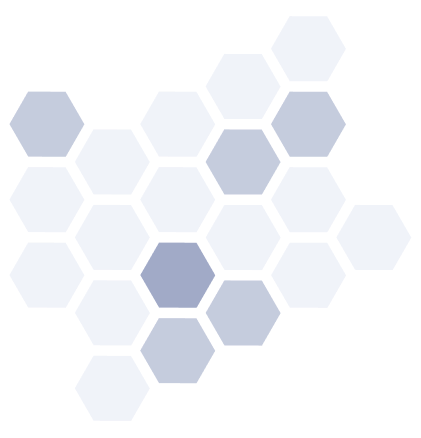

How small patient populations are reshaping the biggest ideas in drug discovery
In modern biotechnology, the phrase rare disease no longer implies limited impact. Although each rare condition affects only a small number of people, together they represent a vast and underexplored frontier of medicine. More than 7,000 rare diseases have been identified, collectively affecting around 300 million people worldwide, yet the majority still have no approved treatment. For scientists and investors alike, this field has become one of the most compelling opportunities in life sciences research.
The growing recognition of rare disease biology is transforming the way we think about drug discovery. What was once regarded as an isolated, niche pursuit has become a source of deep biological insight with implications far beyond its original scope. The study of rare conditions is now helping researchers understand fundamental mechanisms that also drive common diseases, leading to new pathways, targets and technologies that benefit patients everywhere.
From the Exception to the Blueprint
Historically, rare diseases presented a challenge for researchers. Small patient numbers, incomplete data and complex genetic backgrounds made it difficult to establish reliable evidence. However, the convergence of genomic sequencing, powerful data analytics and international collaboration has changed the landscape completely.
Whole genome sequencing has revealed countless variants once dismissed as statistical noise, now known to influence disease mechanisms across multiple conditions. Artificial intelligence can detect molecular patterns shared between rare and common diseases, turning isolated case studies into broader biological models. Meanwhile, patient advocacy groups and global registries have built rich datasets that allow scientists to track disease progression, genetic inheritance and treatment response with a level of detail that was previously impossible.
The result is a research ecosystem where studying the rare increasingly means understanding the universal. Every discovery in a small patient population can illuminate pathways that influence far larger ones.
Lessons from the Edge of Biology
Some of the most successful breakthroughs in modern medicine began in the rare disease space. A genetic mutation discovered in a small West African community led to the development of PCSK9 inhibitors, a class of cholesterol-lowering medicines now used worldwide. Research into cystic fibrosis, long considered a highly specialised field, has provided new knowledge about ion channel biology that informs respiratory and metabolic drug design.
Gene therapy for spinal muscular atrophy, one of the first truly transformative genetic treatments, has become a model for how to deliver therapies directly to affected tissues. The scientific lessons from these breakthroughs are far-reaching, shaping approaches to conditions such as Parkinson’s, Alzheimer’s and heart disease.
In each case, the rare disease served as a clear window into a biological process that was difficult to study elsewhere. By investigating what happens when a single gene or pathway fails in an extreme way, researchers can better understand how to correct or control similar mechanisms in more common illnesses.
The Power of Patient Partnership
A defining feature of rare disease research is the strength of its patient community. Families and advocacy organisations have driven awareness, built registries, and even funded early-stage studies when traditional investment was lacking. Their role has evolved from that of participants to collaborators, shaping trial design, data sharing and policy decisions.
For life sciences companies, working closely with these communities brings enormous value. Patient groups often hold the most complete longitudinal data, providing insights that help scientists design more effective and ethical studies. Their lived experience offers perspective on what meaningful outcomes look like, ensuring that research translates into genuine clinical benefit rather than abstract progress.
This collaborative model is influencing the wider industry. Biotech firms increasingly see patients not just as end-users of treatments but as active contributors to discovery itself.
Rethinking the R&D Pipeline
The boundaries between rare and common disease research are becoming increasingly blurred. Discovery teams in leading organisations now view rare conditions as crucial case studies that reveal universal biological rules. Many pharmaceutical and biotech companies are incorporating rare disease units into their core research pipelines, using them to pilot new therapeutic platforms, data tools and regulatory approaches.
Artificial intelligence models are being trained on rare disease datasets to identify shared pathways across disease categories. This cross-learning approach can dramatically shorten the time between discovery and application, improving efficiency and reducing cost.
For leadership teams, it demands a new mindset. Executives and scientific heads must be able to bridge detailed genetic insight with strategic foresight, recognising how breakthroughs in a rare condition can reshape entire therapeutic portfolios. The most effective leaders are those who can interpret the science and communicate its commercial and social potential.
Small Data, Big Future
The shift towards rare disease research reflects a wider trend in life sciences: precision over scale. Instead of searching for universal treatments for broad patient populations, scientists are uncovering the power of targeted interventions that begin with the specific and expand outward. In doing so, the industry is rediscovering the value of curiosity-driven research. The study of rare diseases reminds us that innovation often begins at the margins, where dedicated scientists, patients and investors work together to solve problems that once seemed too small to matter.
As new data technologies, partnerships and therapies continue to emerge, the lessons learned from these niche areas will guide the next era of biomedical discovery. The smallest datasets, the most specific genetic clues and the most focused patient collaborations are now driving some of the most transformative change in global healthcare.
Rare disease research is no longer peripheral. It is the proving ground of tomorrow’s science, demonstrating that when we study the few with precision and compassion, we often find answers that improve life for the many.


Looking for a New Role – or Searching for Top Talent? Let’s Talk
Whether you're exploring your next career move or looking to hire skilled professionals, HRS is here to help.
We connect ambitious individuals with exciting opportunities across science, technology, and innovation-led sectors. From early careers to executive search, our expert recruiters work closely with both candidates and employers to ensure the perfect match.
If you're hiring, we’ll help you find the right people. If you’re job hunting, we’ll help you take the next step. Browse our latest jobs or get in touch to find out how we can support you.

